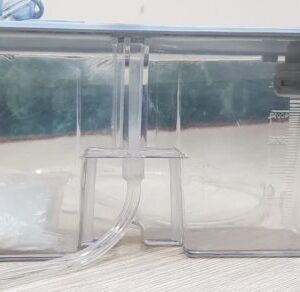VAC (Vacuum-assisted closure)
VAC (Vacuum-assisted closure)
₹15500
Negative-pressure wound therapy (NPWT) is a therapeutic technique using a vacuum dressing to promote healing in acute or chronic wounds and enhance healing of second- and third-degree burns.The therapy involves the controlled application of sub-atmospheric pressure to the local wound environment,using a sealed wound dressing connected to a vacuum pump.
Overview
NPWT promotes wound healing by applying a vacuum through a special sealed dressing. The continued vacuum draws out fluid from the wound and increases blood flow to the area. The vacuum may be applied continuously or intermittently, depending on the type of wound being treated and the clinical objectives. Typically, the dressing is changed two to three times per week.The dressings used for the technique include open-cell foam dressings and gauze, sealed with an occlusive dressing intended to contain the vacuum at the wound site. Where NPWT devices allow delivery of fluids, such as saline or antibiotics to irrigate the wound intermittent removal of used fluid supports the cleaning and drainage of the wound bed.
Technique
General technique for NPWT is as follows: “protect the periwound by applying a skin barrier then it should be followed by a transparent film. A dressing or filler material is fitted to the contours of a wound (which is covered with a non-adherent dressing film) and the overlying foam is then sealed with a transparent film. A drainage tube is connected to the dressing through an opening of the transparent film. A vacuum tube is connected through an opening in the film drape to a canister on the side of a vacuum pump. or vacuum source, turning an open wound into a controlled, closed wound. while removing excess fluid from the wound bed to enhance circulation and remove wound fluids. This creates a moist healing environment and reduces edema. There must be an air tight seal in order for this therapy to be successful. The technique is usually used with chronic wounds or wounds that are expected to present difficulties while healing (such as those associated with diabetes).
Three types of filler material are used over the wound surface: open-cell foam, gauze and transparent film, or honeycombed textiles with a dimpled wound contact surface.
• Foam dressings are used to fill open cavity wounds and can be cut to size to fit wounds. The foam dressing is applied, filling the wound and then a film drape is applied over the top to create a seal around the dressing.
• Open weave cotton gauze can be covered with a transparent film, and a flat drain is sandwiched in gauze and placed onto the wound. The film drape covers the wound and create a complete seal, and then the drain is connected to the pump via the tubing.
• Layers of non-woven polyester, joined by a silicone elastomer, has a non-adherent wound contact surface made up of numerous small semi-rigid dome structures, though this solution has not completed a clinical trial as of December 2012.
• With all three techniques, once the dressing is sealed the vacuum pump can be set to deliver continuous or intermittent pressures, with levels of pressure depending on the device used, varying between −125 and −75 mmHg depending on the material used and patient tolerance Pressure can be applied constantly or intermittently
• The dressing type used depends on the type of wound, clinical objectives and patient. For pain sensitive patients with shallow or irregular wounds, wounds with undermining or explored tracts or tunnels, gauze may be used, while foam may be cut easily to fit a patient’s wound that has a regular contour and perform better when aggressive granulation formation and wound contraction is the desired goal.


